 First: A Map of Tinian
First: A Map of Tinian
& Suggested Tour Route
Location: Western Pacific
GPS:gps
Driving directions
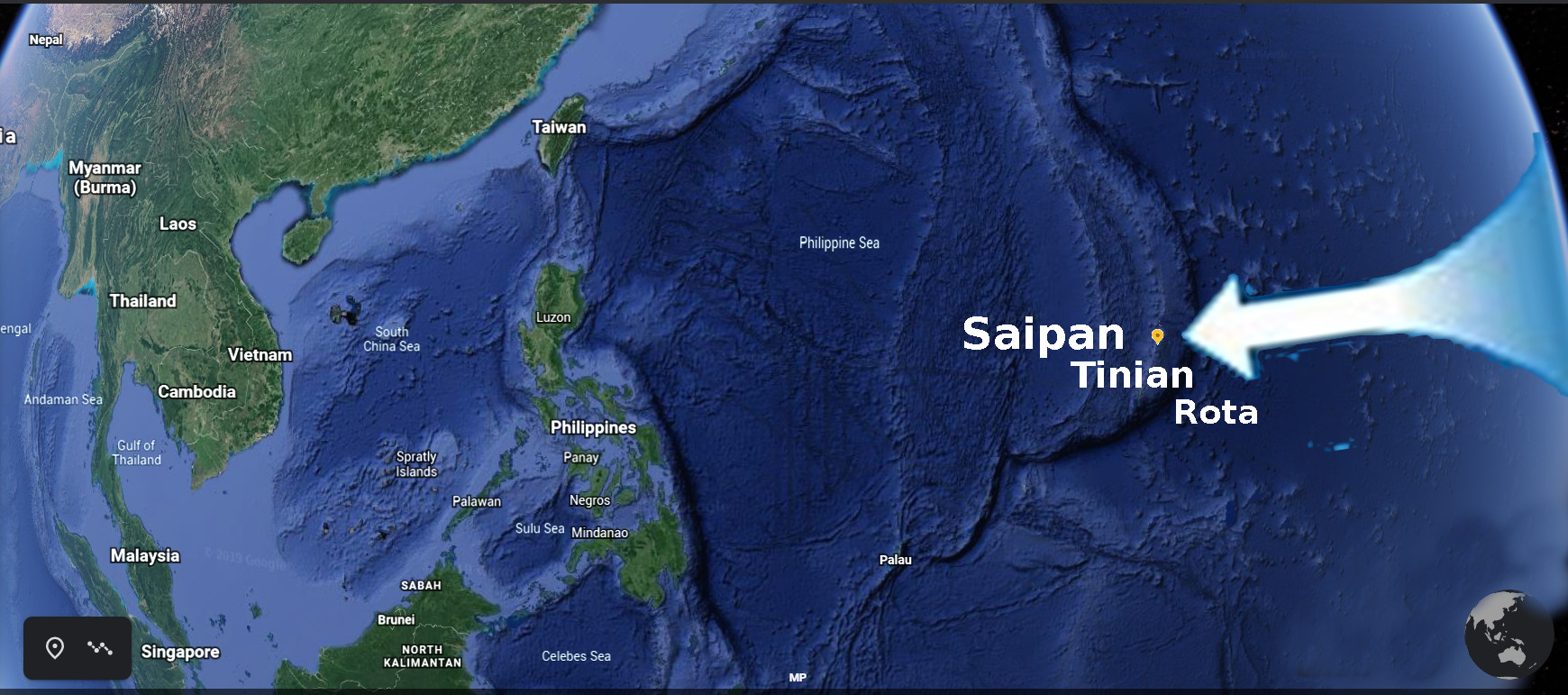
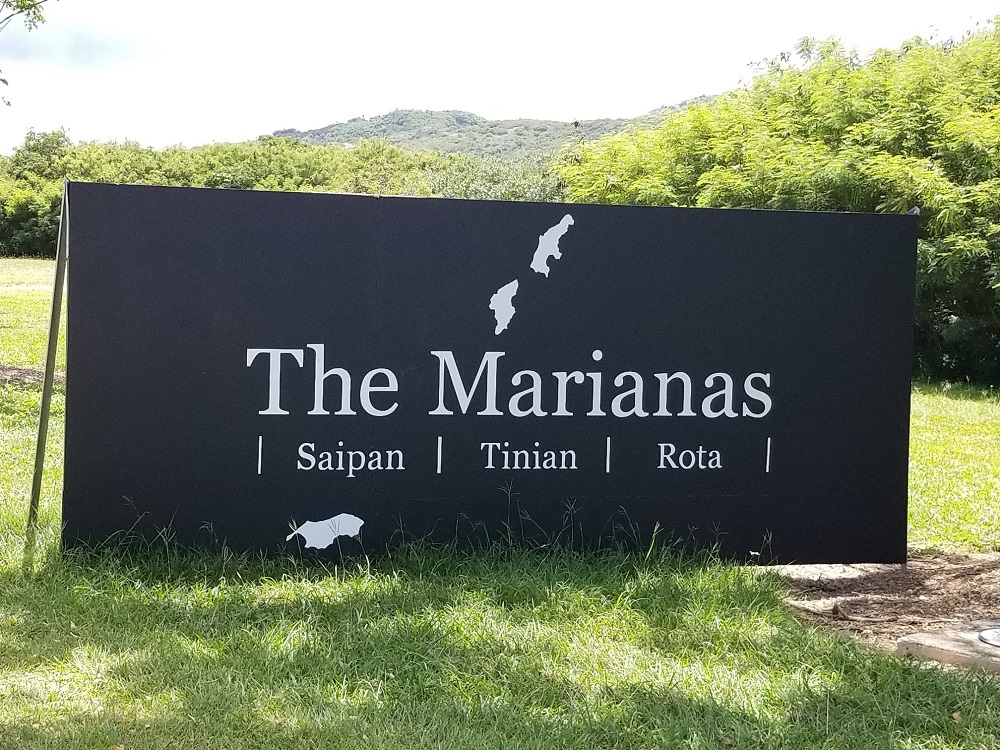
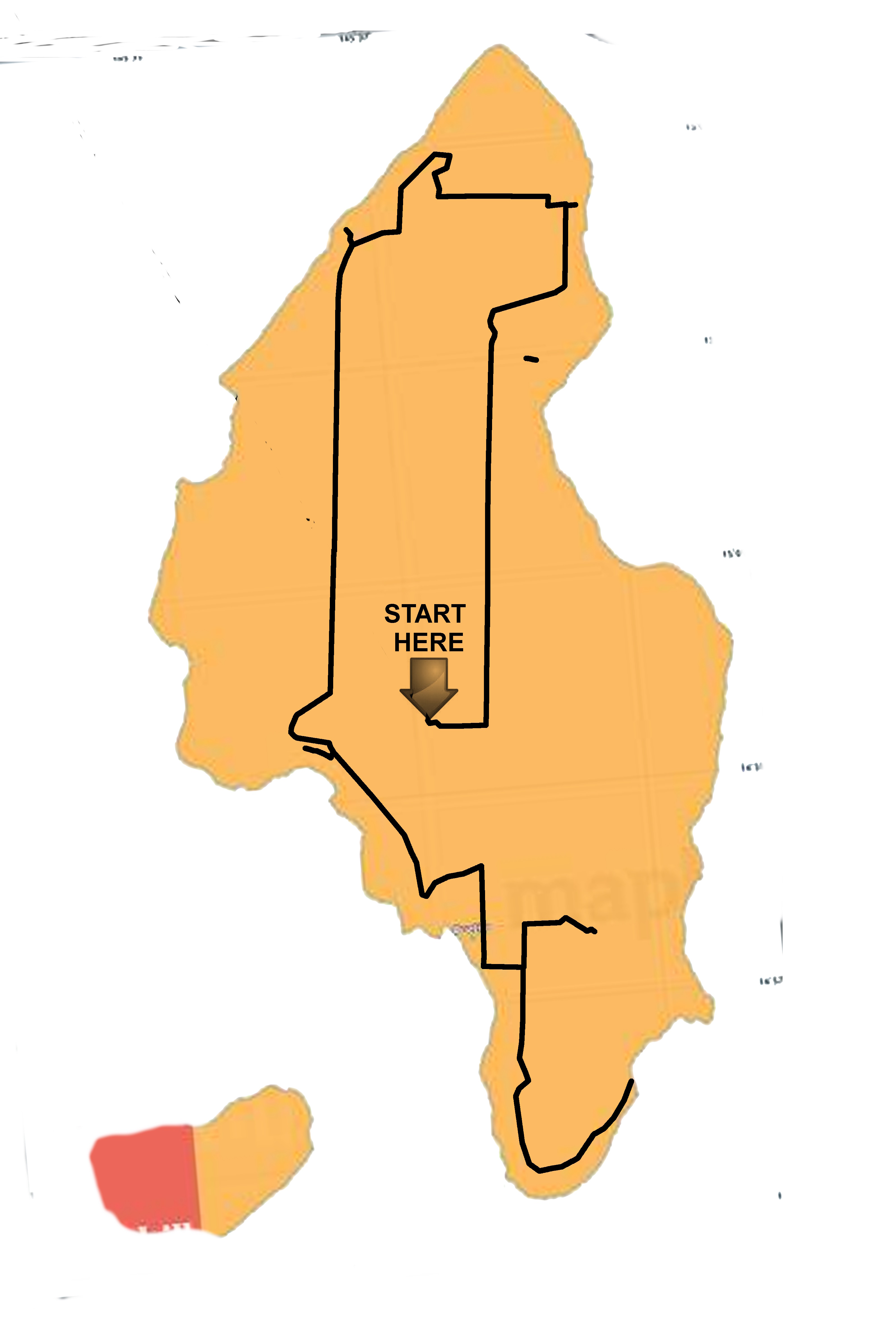
Sources: Dept of the Navy,MVA,HPO,Wikipedia,
Categories: World War II



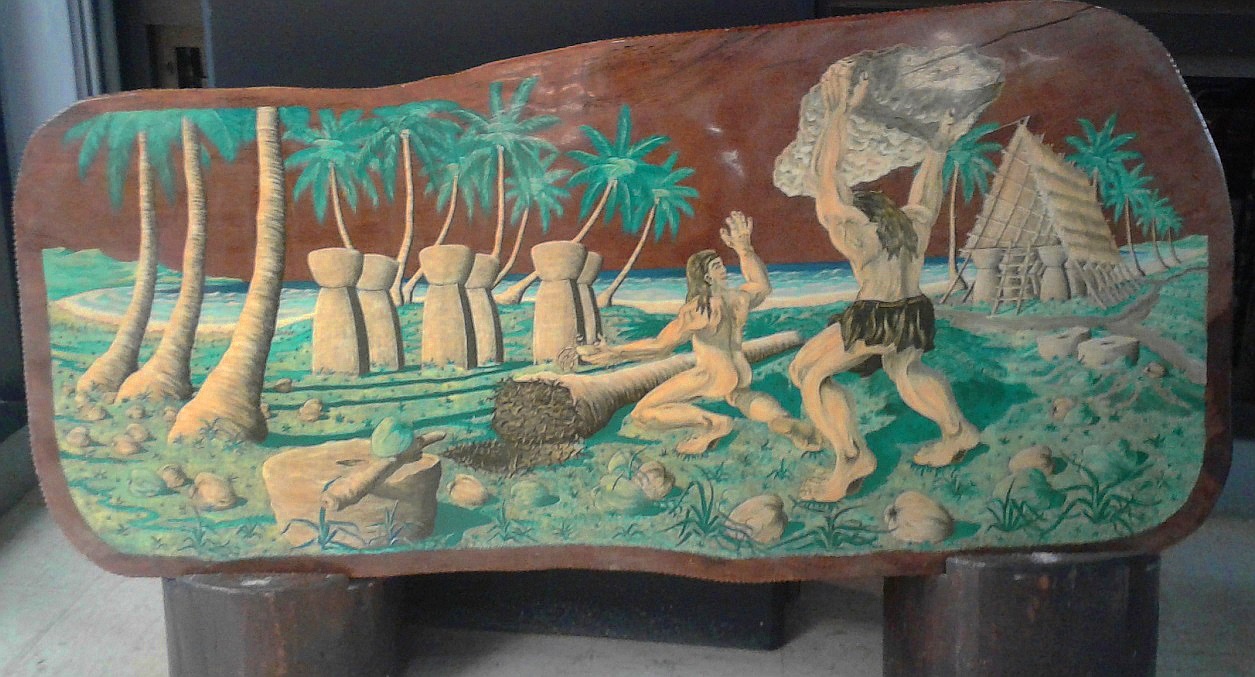
On your way through the Tinian airport terminal, be sure to find and snap a photo of this sculpture featuring Chamorro King Taga created by resident, John David Diaz. You'll learn more about what it depicts later in the tour! [photo: Cassandra Randolph]
Categories: Chamorro/Carolinian/Pacific Culture
You can't fly all the way to Tinian--one of the most significant destinations in world history--and NOT take a photo next to the sign! Very few people in the world ever set foot on this island! Do it! You won't regret it!
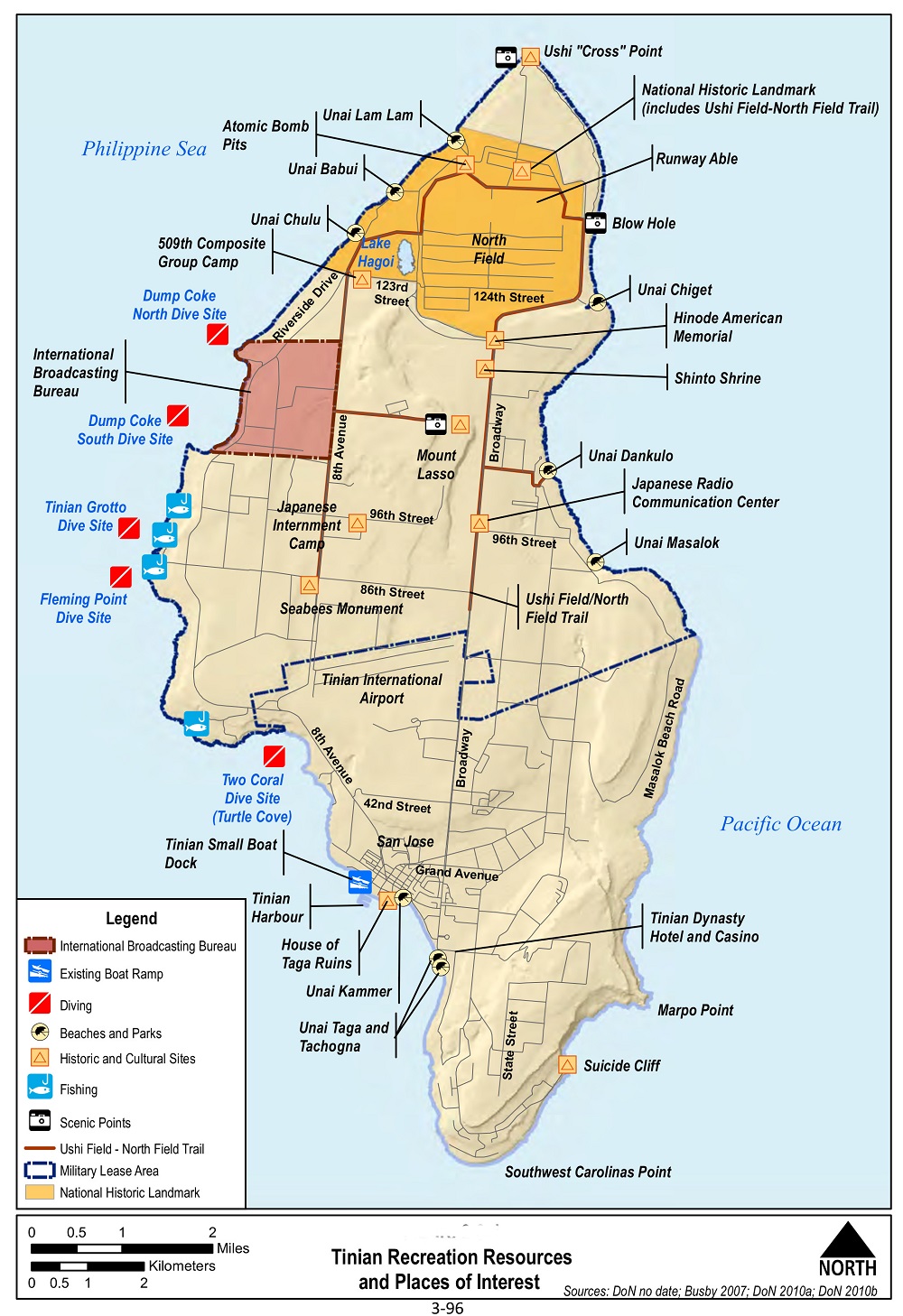
The Department of the Navy (DoN) retains control of lands encompassing the North Field National Historic Landmark based on a 50-year lease agreement with the CNMI (the landowner) that has been in place since 1983 (National Park Service 2001). The sites are accessible to the public, except during certain periods of military training. The DoN provides a 45-day advance notice to the CNMI agencies when military training is scheduled on Tinian (National Park Service 2001). Some areas of the lease area (i.e. Mortar Testing Area) are permanently off limits to the public and have signs alluding to that reality.
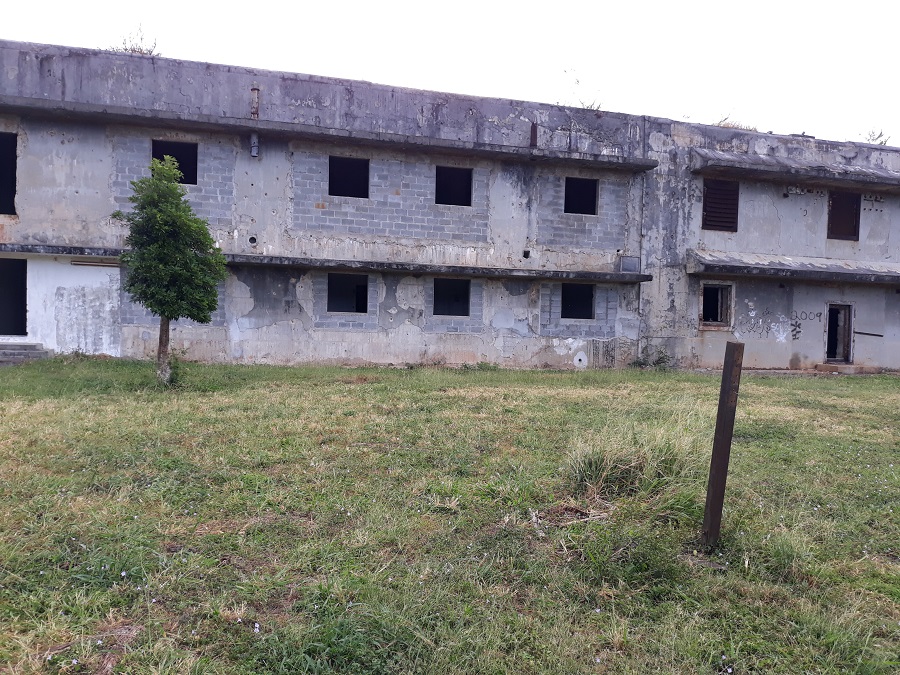
Content pending
Over the years, this building has been used by residents for a number of other purposes including as a typhoon shelter and even an animal slaughterhouse!
Content pending

Content pending
Before the American invasion of Tinian in World War II, U.S. military intelligence identified two dual-purpose, dual-mount guns at this position. These guns would have been trained on Unai Dankulo, the beach to the east.
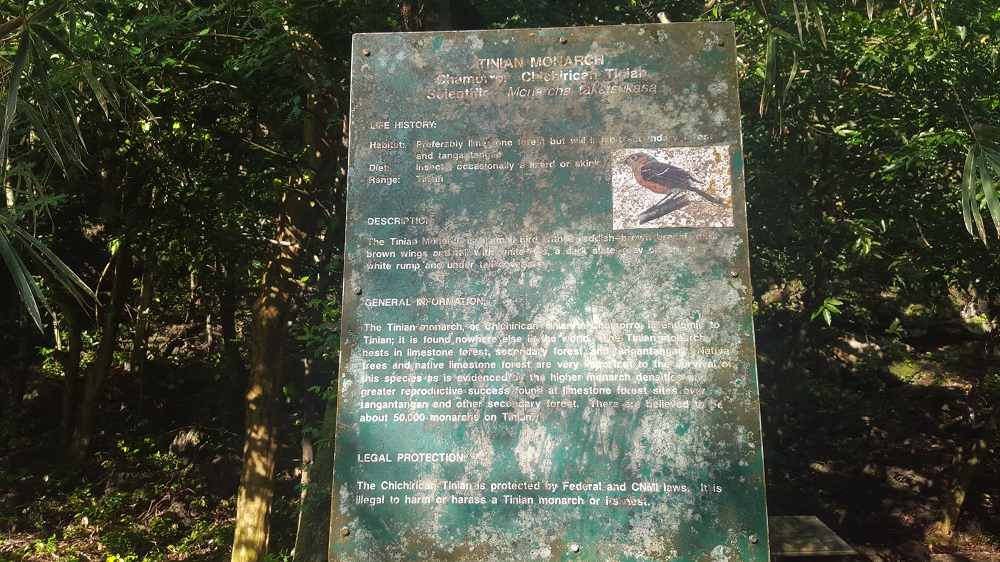
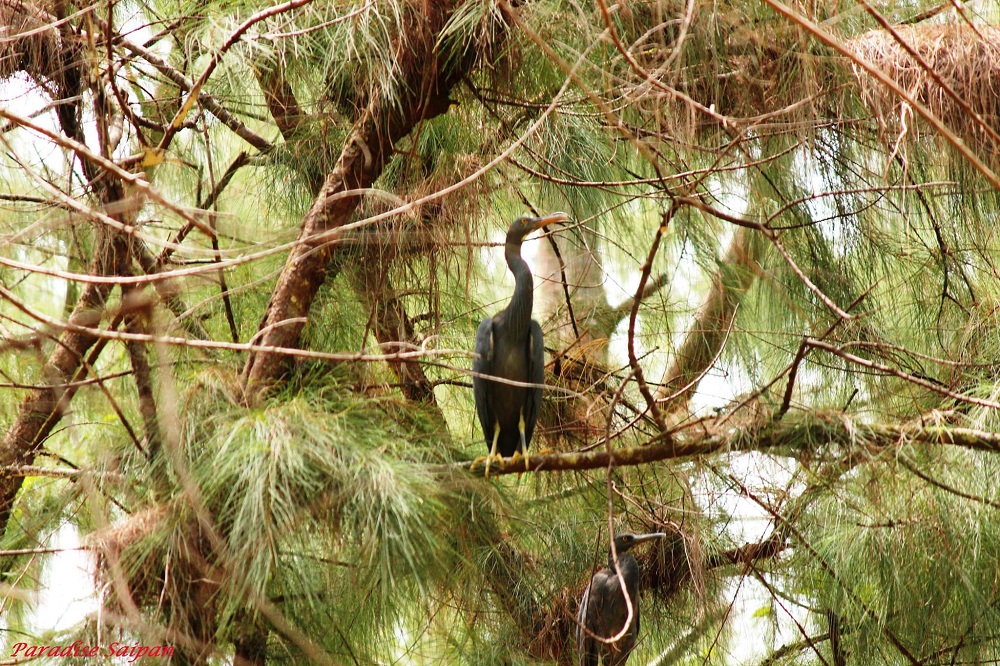
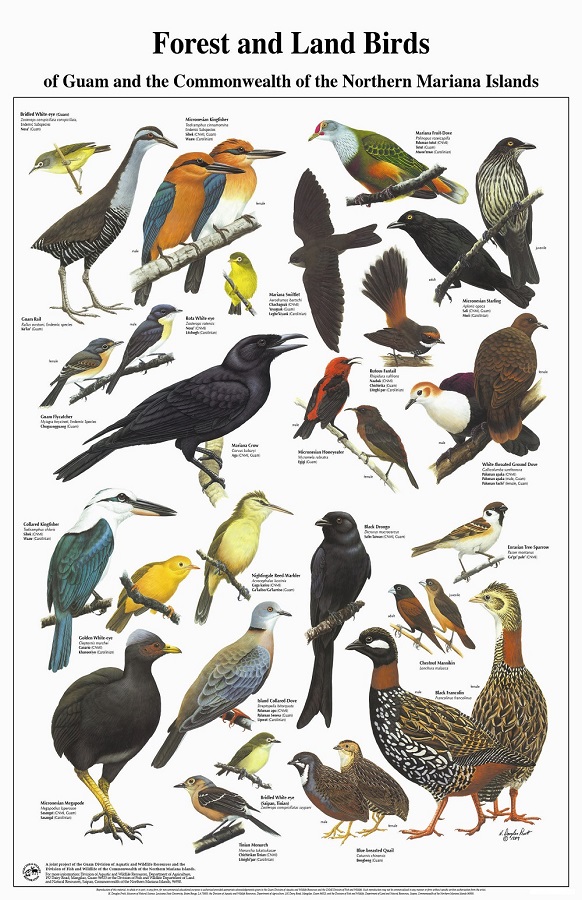
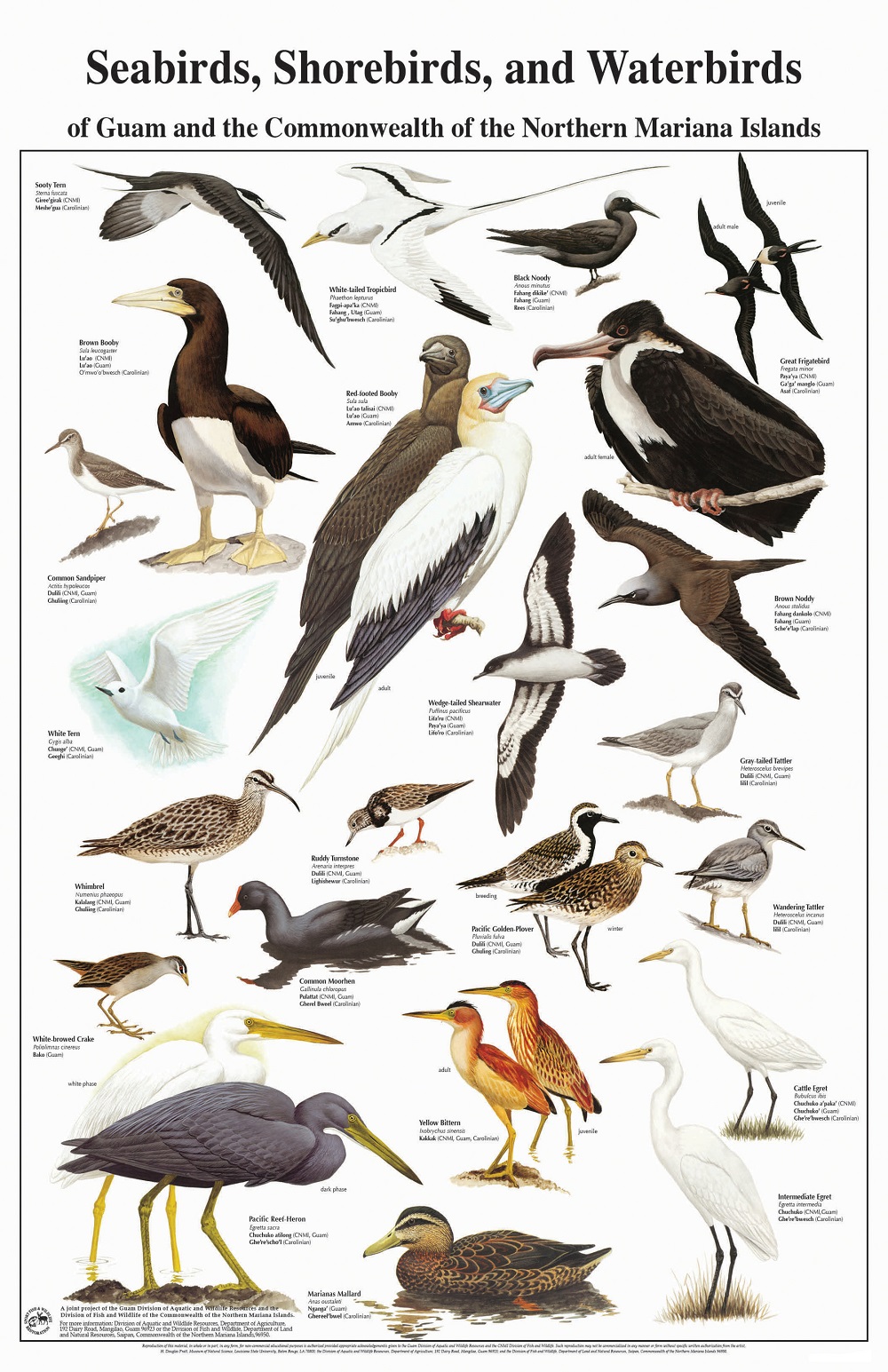
Speaking of the Tinian Monarch, keep your eyes open! Tinian, like Saipan, is home to a variety of sea and land birds. During your tour, you're likely to hear then see the unmistakable bright blue and white Kingfisher or the Pacific Reef Heron while you're on the beach!
Categories: Nature
The NKK Shinto Shrine was built next to a spur of the sugar railroad, and its name suggests that it was constructed by the sugar company, the Nan'yo Kohatsu (or NKK), the South Seas Development Company. A date on one of the arches indicates that it was built in 1941.
The path to the altar leads through two torii, Shinto gates. These gates mark the hallowed ground of the shrine and may symbolize wild trees, suggesting the origins of Shinto in the spirits of nature. The style of the torii here is known as "Myojin," referring to the enlightened Kami [diving spirits of Shinto], with the characteristic upward curve of the top bars. Myojin-Torii was a popular torii style in Japan during the early 1900s. It is said to have originated at the Kamo Shrines of Kyoto, and is best known at the Meiji Shrine of Tokyo.
Japanese development on Tinian started around 1926 when the NKK expanded its operations from Saipan to Tinian. Tinian was ideally suited for sugarcane. Within ten years, the island had become a giant plantation, with aout 80 percent of the island under sugarcane cultivation. Tinian had also become an island of Japanese citizens and Japanese culture.
North of the Shinto Shrine and Okinawan house is a large traffic circle on Broadway. Traveling north, the road turns sharply to the east and begins its descent down to North Field plateau. The grass-covered center median of the traffic circle contains the American Memorial consisting of various Japanese-style small concrete monuments (Photo 3.8-9) that were built by Americans after World War II to honor those who were killed in the battle for Tinian.
You can see in the photo what it looked like back in the 1940s. [photo from Pirates Log: A Historical Record of the 6th Bomb Group brought along by a guest in search of his father's legacy]
If you come at just the right time of year, this is what awaits you at the flame tree at the American as well as at many other locations around the island! Memorial
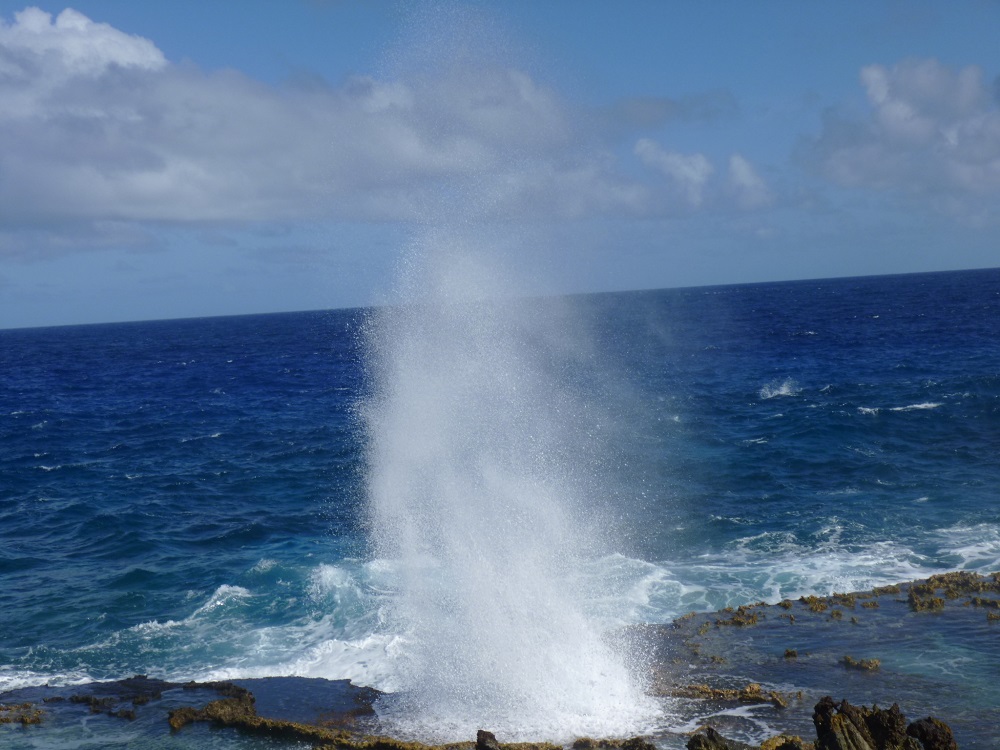
This natural wonder off Tinian's east coast makes for great photographs
Sometimes you can find sea salt that has accumulated on the rocks near the blowhole!

Ushi “Cross” Point is the northern-most point of the island. In addition to the various memorials at the point, the site and surrounding area are used by local fishermen.
Content pending
Both runways Able and Baker are used today during military activities.
Content pending
Both runways Able and Baker are used today during military activities.
Content pending
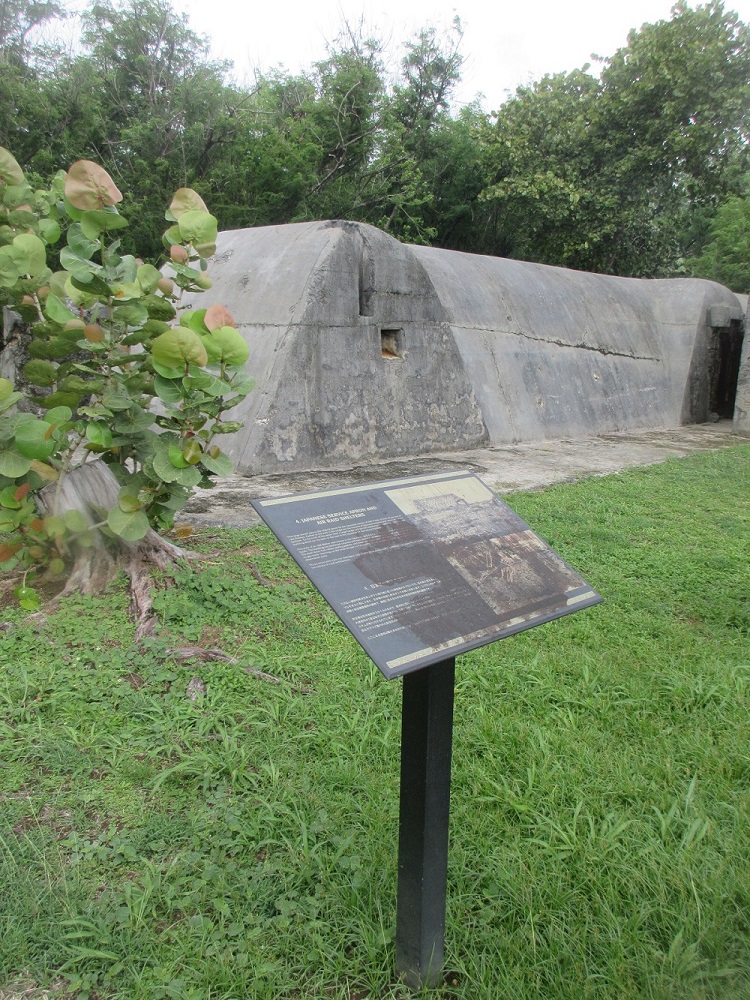
This two-story building was the World War II headquarters of the Japanese Navy's 1st Air Fleet (Base Air Force of the Marianas), commanded by Vice Admiral Kabuji Kakuta. The building and air operations were part of the Japan's Central Pacific Area Fleet. Vice Admiral Kakuta was not in the chain of command for the defense of Tinian, which was the responsbility of Colonel Kiyochi Ogata of the Japanese Army.
Admiral Kakuta's airfields in the Marianas and Iwo Jima served as staging areas for moving aircraft to southern Pacific battle areas and for attacks on American ships. By July of 1944, the airfields directed from the 1st Fleet headquarters had been captured or destroyed. What remained of Admiral Kakuta's airplanes was destroyed in the naval battle of the Philippine Sea a month before the battle of Tinian. (In Japanese history, the Battle of the Philippine Sea is known as the Battle of the Marianas.)
When Americans captured Ushi Field, the headquarters building was abandoned and Ushi Field was a "ghost-field" of abandoned airplane wrecks.
The fate of Vice Admiral Kakuta is unknown, but was probably suicide or death in battle. His last radio message to Tokyo was on July 30 as the battle of Tinian was nearing its conclusion.
The massive concrete headquarters building was damaged by American artillery, but the building was repaired and used by American military officers after the invasion.
This massive power plant was probably built in 1939-1940 as part of the Japanese military construction of Ushi Field. The "bombproof" building was constructed of reinforced concrete and had steel shutters covering the windows.
The building housea 200kilowatt power plant run by diesel fuiel. The two-tank diesel fuel storage building is on the north side of the power plant and was connected to it by underground fuel pipes. The generators were water-cooled, with water tanks being located in the concrete chambered buildings to the north. Between the cooling chambers and the power plant are two underground exhaust mufflers.
The building was severely damaged by American artillery shells. The generator was salvaged by American construction battalion crews.
Once you step inside the main building, you'll see the tremendous damage that direct hits from missiles can wreak on a building. Note the bent reinforcment bars and steel window frames. Amazingly, the building withstood the assault, as it was designed to.
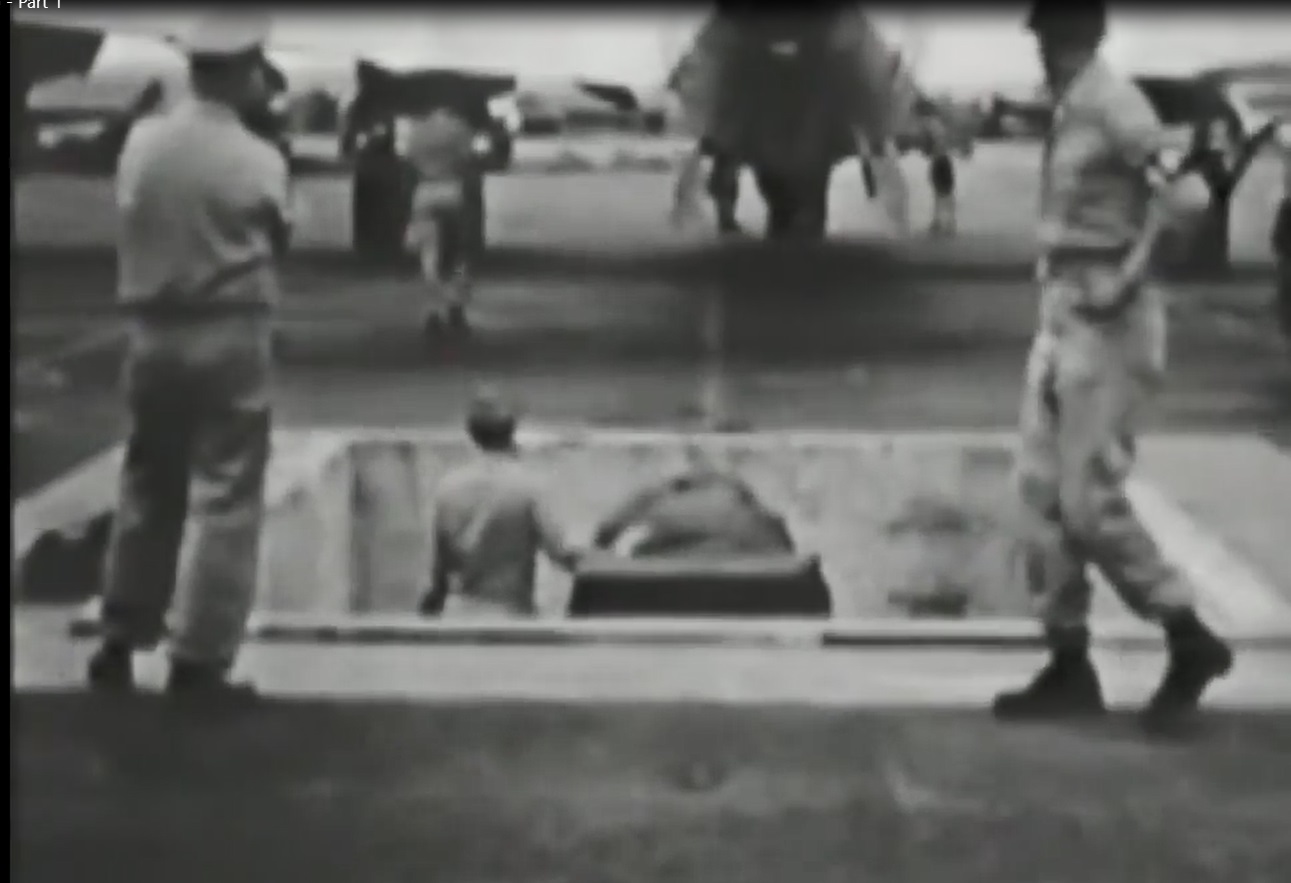

Content pending

Content pending
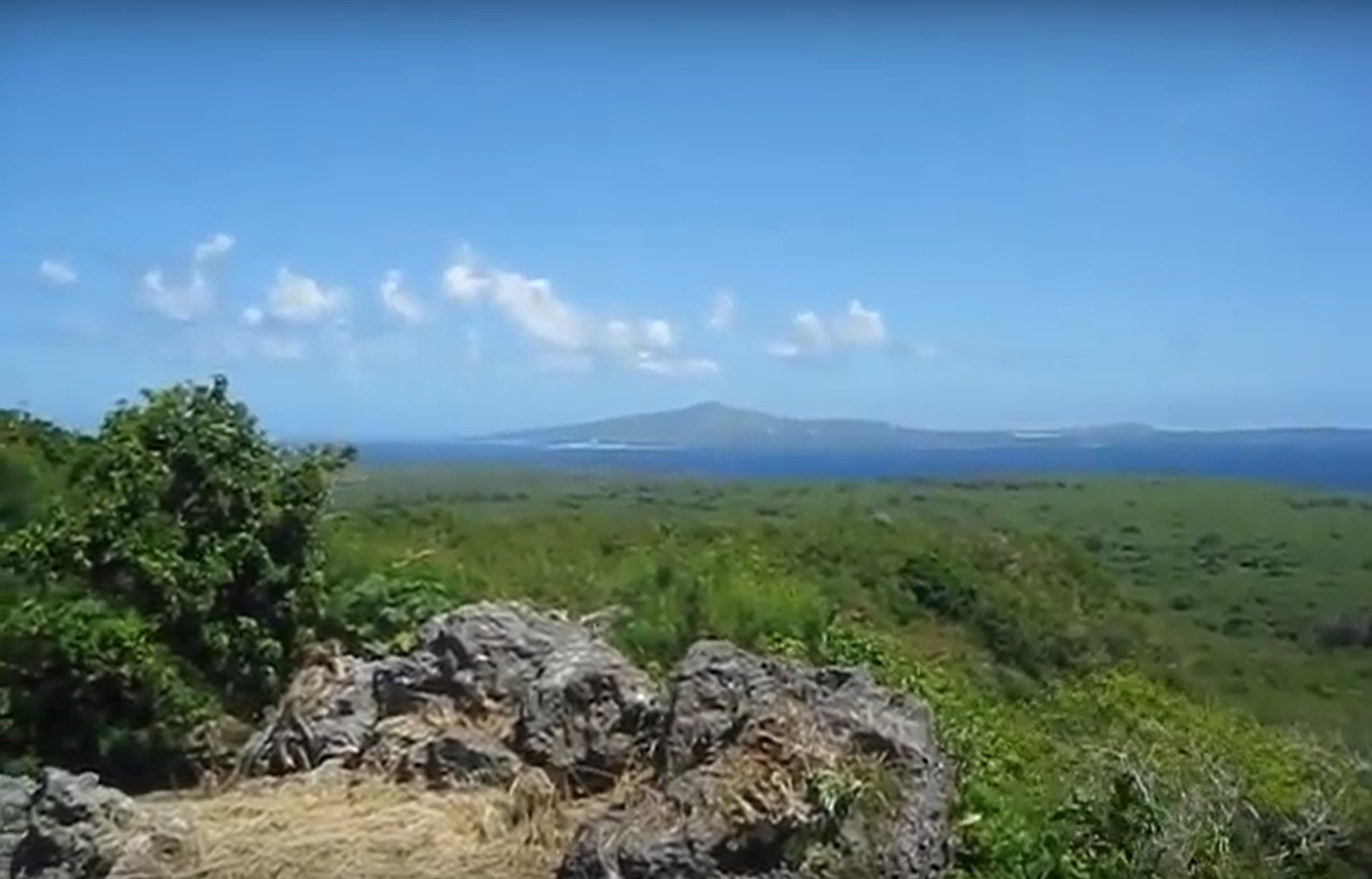
Mount Lasso, located in the central portion of the Military Lease Area, is accessed from an unimproved road extending up the west side of the mountain off of 8th Avenue. The approach to the lookout involves passing the foundation of a former World War II Army Air Corps hospital and the remnants of a 1920s/1930s-era Japanese Shinto shrine near the lookout area.
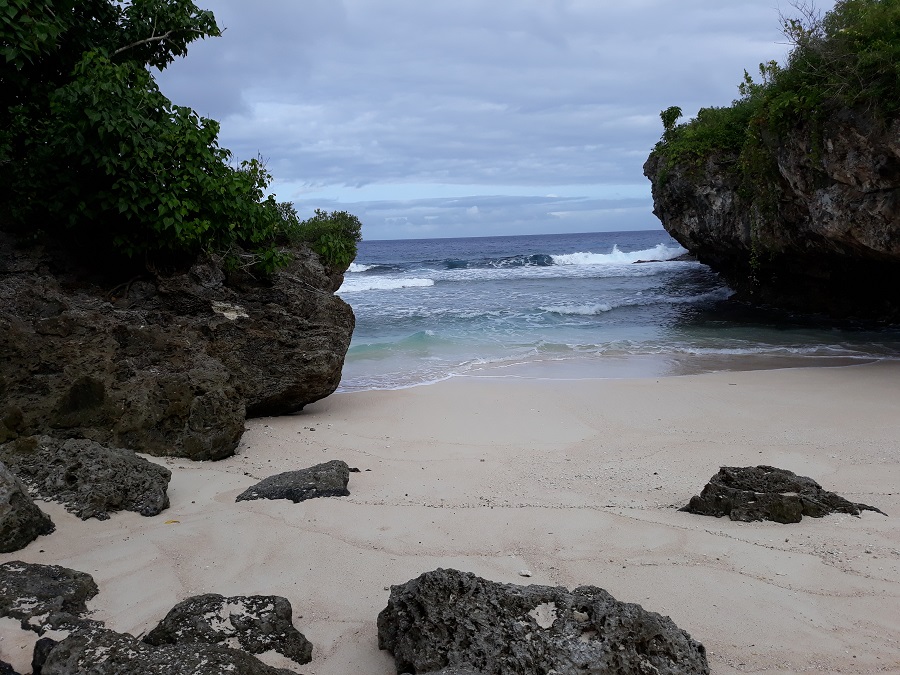
Unai Lam Lam is located on the northwest coast, a short distance from the atomic bomb pits. This small beach is accessed by a thickly vegetated foot trail off a narrow dirt road. The beach is approximately 52 feet (16 meters) wide and is protected by a coral reef. This location is remote and access is difficult, as the only access is a steeply graded, rocky trail.
Unai Chulu is located south of Unai Babui. Unai Chulu was designated “White Beach Two” by the Allies during the World War II invasion and is also part of the North Field National Historic Landmark. Unai Chulu is the most accessible beach in the Military Lease Area. Access to the beach is well marked along an improved road. This beach is approximately 479 feet (146 meters) long, with a World War II Japanese bunker located at the north end adjacent to the parking area. Like Unai Lam Lam and Unai Babui, Unai Chulu is on the leeward (western) side of the island and is less windswept with thicker and taller vegetation than east coast beaches. The beach consists of white sand and a rocky shoreline.
Content pending
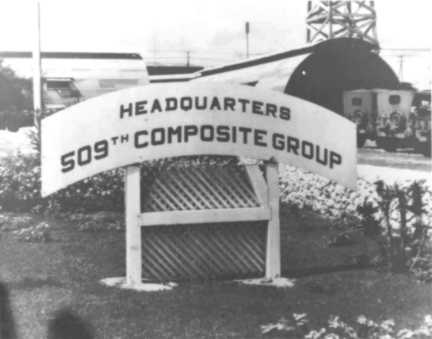
The 509th Composite Group was the U.S. Army Air Corps unit responsible for the delivery of the atomic bombs that were dropped on the Japanese cities of Hiroshima and Nagasaki at the end of World War II. The group’s camp area was southeast of the 8th Avenue traffic circle, just south of the North Field National Historic Landmark. The camp location is marked by a sign, and the ruins of building foundations can be found along trails that have been cleared in the thick vegetation
Voice of America (VOA) is a U.S. multimedia agency which serves as the United States non-government institution for non-military, external broadcasting. It is the largest U.S. international broadcaster. VOA produces digital, TV, and radio content in more than 40 languages which it distributes to affiliate stations around the globe. It is primarily viewed by foreign audiences, so VOA programming has an influence on public opinion abroad regarding the United States and its people.
Categories: Contemporary CNMI life
Content pending
Categories: World War II
Inscription on Monument: "To the men of the 107th United States Naval Construction Battalion and all the Seabees who in 1944-45 on Tinian, Mariana Islands, participated in the largest engineering feat of WWII. Seabees constructed four runways and created the world's largest airbase; enabling the U.S. armed forces to end the war in the Pacific.
"We of the X107th Seabees consecrate this ground to our fallen comrades. May God help us to avoid WWIII." (Dedicated Nov 11, 1985)
The 107th U.S.N.C.B. was commissioned 31 July, 1943, decommissioned 21 Oct. 1945. The unit served on Ebeye & Bigei (Kwajalein Atoll) and on Tinian, Mariana Islands.
Content pending
Content pending
Content pending
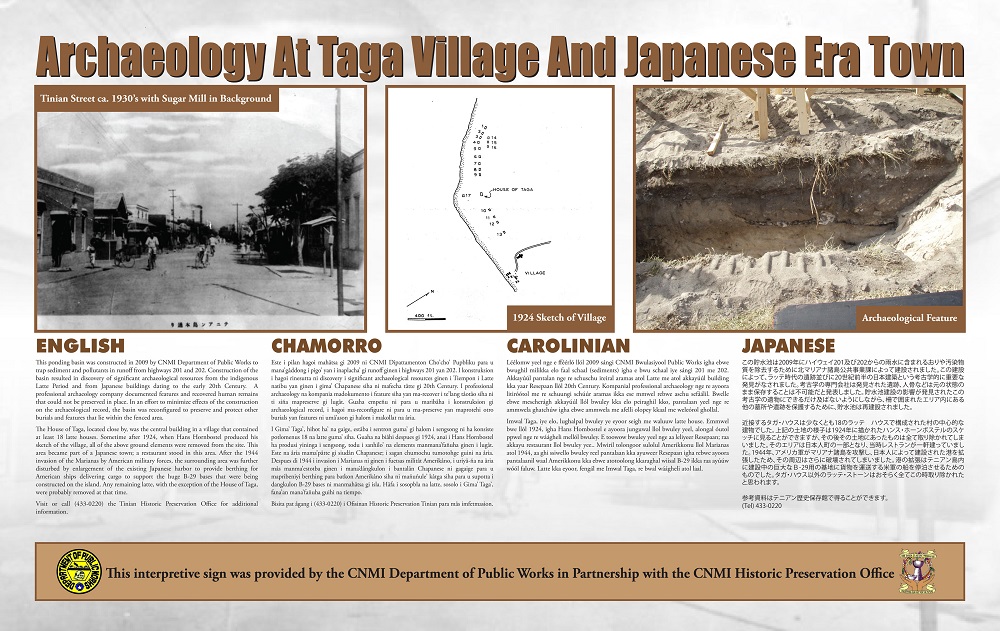
"This ponding basin was constructed in 2009 by CNMI Department of Public Works to trap sediment and pollutants in runoff from highways 201 and 202. Construction of the basin resulted in discovery of significant archaeological resources from the indigenous Latte Period and from Japanese buildings dating to the early 20th Century. A professional archaeology company documented features and recovered human remains that could not be preserved in place. In an effort to minimize effects of the construction on the archaeological records, the basin was reconfigured to preserve and protect other burials and features that lie within the fenced area.
"The House of Taga, located close by, was the central building in a village that contained at least 18 latte houses. Sometime after 1924, when Hans Hornbostel produced his sketch of the village, all of the above ground elements were removed from the site. This area became part of a Japanese tour; a restaurant stood in this area. After the 1944 invasion of the Marianas by American military forces, the surrounding area was further disturbed by enlargement of the existing Japanese harbor to provide berthing for American ships delivering cargo to support the huge B-29 bases that were being constructed on the island. Any remaining latte, with the exception of the House of Taga, were probably removed at that time.
Visit or call (433-0220), the Tinian Historica Preservation Office, for additional information."
The remnants of a house belonging to the ancient Chamorro chief, Taga, are in the village of San Jose. This site contains the tallest set of latte stones used by the ancient Chamorros throughout the CNMI. Latte stones are pillars capped by a hemispherical stone capital with the flat side facing up that were used as building supports by the ancient Chamorro people. The stones are quarried limestone, each approximately 19 feet (6 meters) in length. Of the 12 large latte structures, only one remains standing (Photo 3.8-13). The Ruins of the House of Taga are listed on the National Register of Historic Places
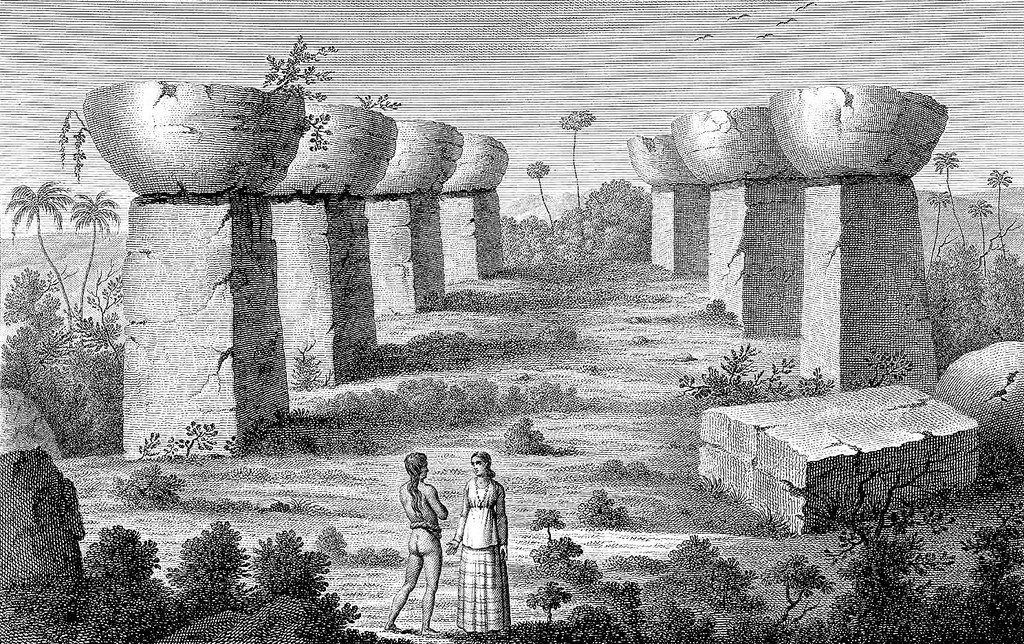
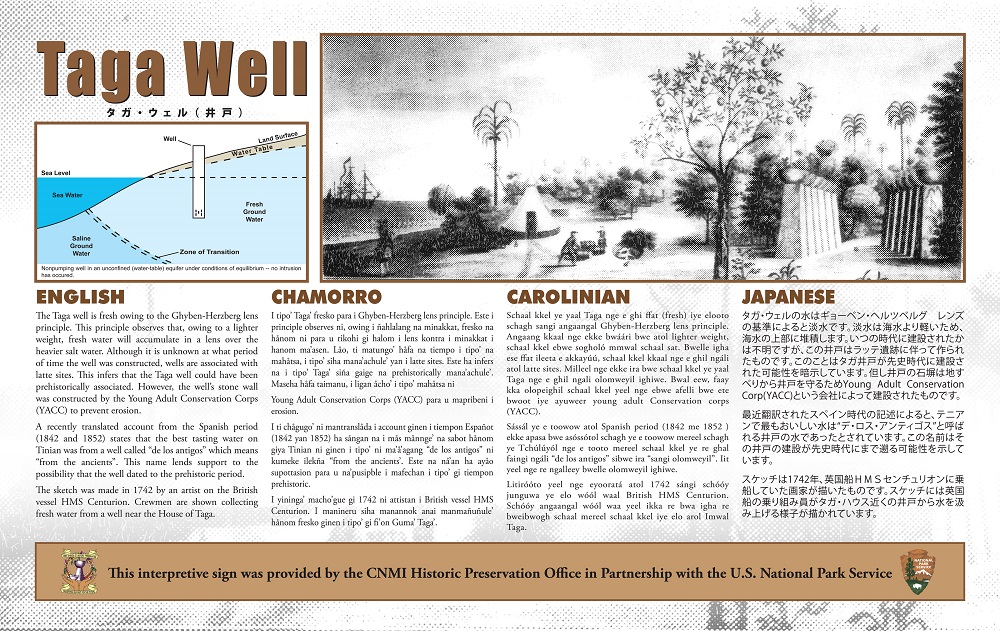
The Taga well is fresh owing to the Ghyben-Herzberg lens principle. This principle observes that, owing to a lighter weight, fresh water will accumulate in a lens over the heavier salt water. Although it is unknown at what period of time the well was constructed, wells are associated with latte sites. This infers that the Taga well could have been prehistorically associated. However, the well's stone wall was constructed by the Young Adult Conservation Corps (YACC) to prevent erosion.
A recently translated account from the Spanish period (1842 and 1852) states that the best tasting water on Tinian was from a well called "de los antigos" which means "from the ancients." This name lends support to the possibility that the well dated to the prehistoric period.
The sketch was mande in 1742 by an artist on the British vessel HMS Centurion. Crewmen are shown collecting fresh water from a well near the House of Taga.
According to legend, this well was dug by Chief Taga and served as a fresh water source for his family. An English naval officer, Commodore George Anson, mentioned this well in a written account of his visit to Tinian in 1742. Anson tells of how one of his men fell into the well during a fight and drowned. The sides of the well are stone lined and, similar to other wells, dug into the coastal lowlands of Saipan, Tinian and Rota to reach a layer of fresh water that floats atop the denser seawater.

Unai Taga is located directly across from the Tinian Dynasty Hotel and Casino front entrance. The Unai Taga area is small and is accessed by a stairway system that extends to the beach and a concrete lookout area extending over the ocean where many local children enjoy diving and swimming. While the beach itself is quite small and generally frequented by residents, the site offers outstanding views to Aguijan Island and turquoise blue waters. It is a sightseeing stop for tourists.

Unai Tachogna is located just south of Unai Taga and connected to it by a shoreline pathway. On weekends, local families and groups gather here to barbecue and picnic. It is also a popular place for snorkeling, personal watercraft, and banana boats, most of which can be rented from the beach operators. Like Unai Kammer, there are numerous covered pavilions for picnicking and socializing. This is often the spot of the annual Pika (hot pepper)Festival held in February!
Content pending
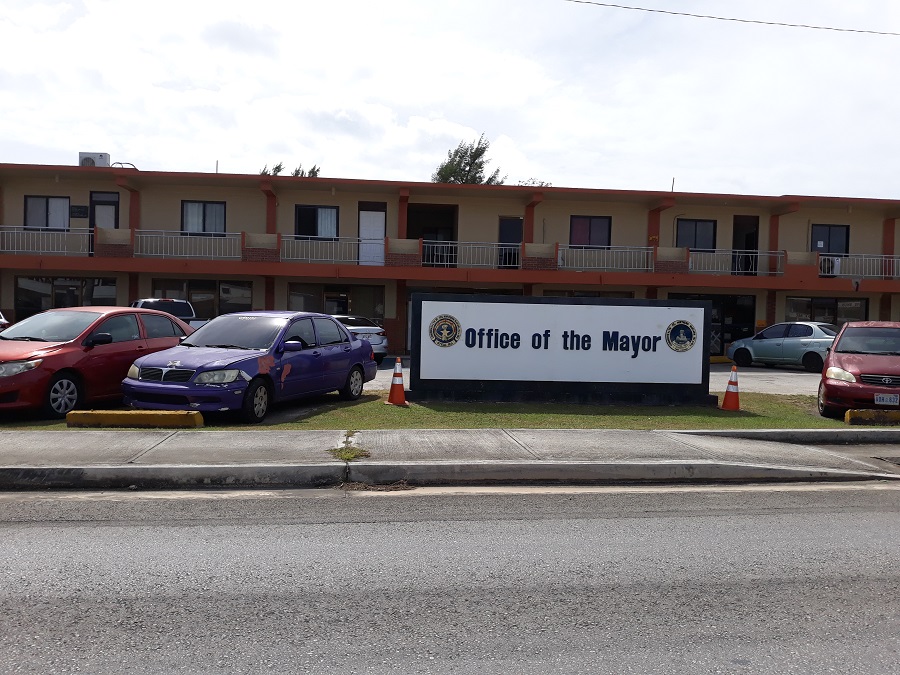
Mayor's office, fire station, library, schools, supermarkets, banks, post office...all within a three block strip!
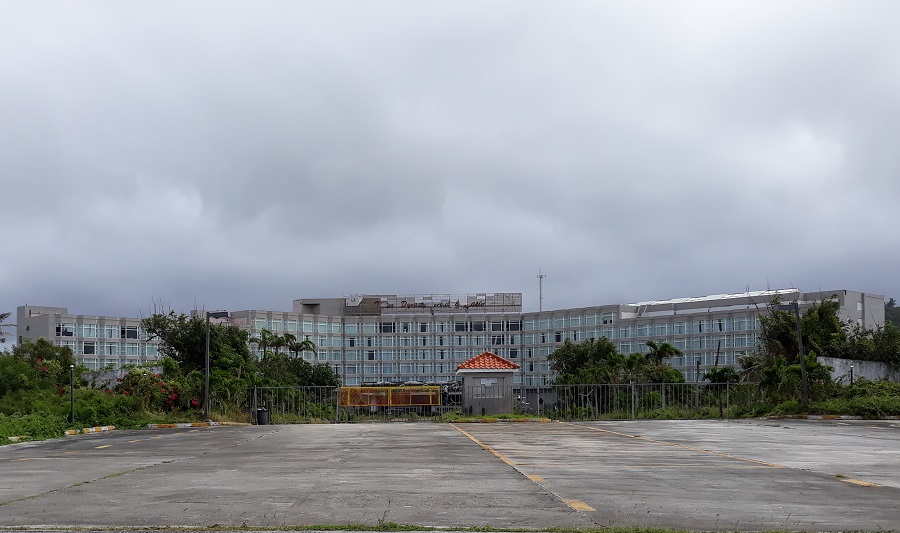
Content pending